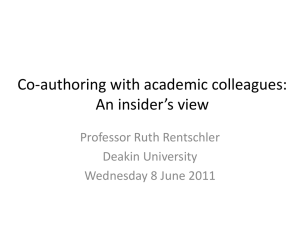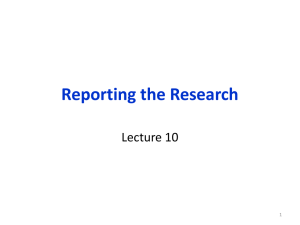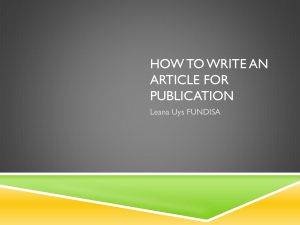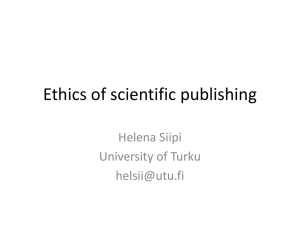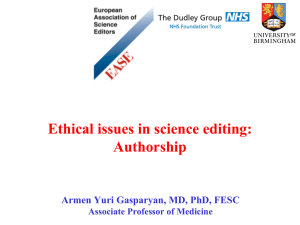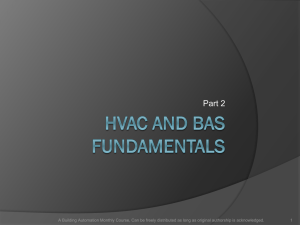III. Research Integrity, authorship and attribution
advertisement
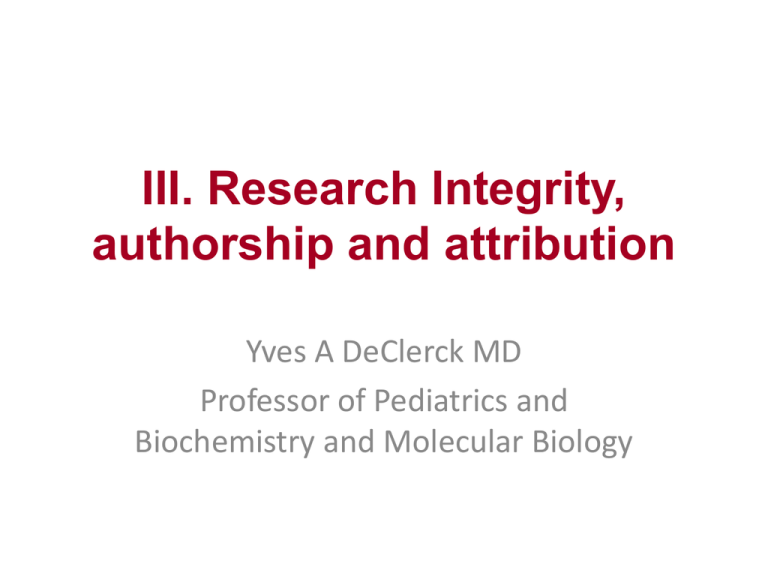
III. Research Integrity, authorship and attribution Yves A DeClerck MD Professor of Pediatrics and Biochemistry and Molecular Biology What Are The Issues? From a total of 270 issues < 0.5% of yearly submission Redundant/ Duplicate Publications 39% Others 3% Conflict of Interest 5% Human Welfare 8% Authorship 14% Animal Welfare 16% Misconduct 15% Benos et al. American Physiological Society Journals, 1996-2004 “Scientists Behaving Badly” The Most Frequent ‘Borderline’ Behaviors Per Cent 30 20 10 0 Brian C. Martinson, Melissa S. Anderson and Raymond de Vries, Nature, 2005 Transparency in Publication 3 Questions • Has the work been published before? – Duplication – Redundancy • Who did the work? – Authorship – Contributorship • Who funded the work? – Acknowledgment – Conflict of interest Duplication is Misconduct (Self-plagiarism) • Attempt to inflate one’s own publication record • Potential to skew the evidence base • Critical in clinical trials reports as it can lead to over (or under) estimation of a drug efficacy and safety Redundant Publications • Publication of copyrighted material with additional new or unpublished data • Ethical aspects: – Can infringe international copyright law – Waste of time and energy – Needless expansion of the literature – Source of confusion – Overemphasis of findings – May “boost” patient or experimental numbers The Problem in Authorship -Increase in number of authors per publication over time Per Cent Average number of authors APS 1960-2004 2 author papers Single author paper Benos, D. J. et al. Advan. Physiol. Edu. 29: 59-74 2005; doi:10.1152/advan.00056.2004 Copyright ©2005 American Physiological Society Authorship Issues • • • • Guest, gift or honorary authorship Ghost authorship: professional writers Denial of authorship: a form of plagiarism Order in authorship – – – • More assumptions than rules First author, second author and last author Corresponding author is the responsible author Particularly relevant in papers reporting clinical trials Authorship 1. Substantial contributions to conception and design, or acquisition of data, or analysis and interpretation of data 2. Drafting the article or reviewing it and, if appropriate, revising it critically for important intellectual content 3. Final approval of the version to be published. Authors should meet conditions (1) and (2) and (3). Participation solely in the acquisition of funding or data collection does not justify authorship. International Committee for Medical Journal Editors (ICMJE): The Vancouver Group (Ann Intern Med, 1997) ICMJE Guidelines for Authorship/Contributorship • • Authorship • Authorship credit should be based on 1) substantial contributions to conception and design, acquisition of data, or analysis and interpretation of data; 2) drafting the article or revising it critically for important intellectual content; and 3) final approval of the version to be published. Authors should meet conditions 1, 2, and 3. • When a large, multicentre group has conducted the work, the group should identify the individuals who accept direct responsibility for the manuscript. These individuals should fully meet the criteria for authorship/contributorship defined above, and editors will ask these individuals to complete journal-specific author and conflict-of-interest disclosure forms. When submitting a manuscript authored by a group, the corresponding author should clearly indicate the preferred citation and identify all individual authors as well as the group name. Journals generally list other members of the group in the Acknowledgments. The NLM indexes the group name and the names of individuals the group has identified as being directly responsible for the manuscript; it also lists the names of collaborators if they are listed in Acknowledgments. • Acquisition of funding, collection of data, or general supervision of the research group alone does not constitute authorship. • All persons designated as authors should qualify for authorship, and all those who qualify should be listed. • Each author should have participated sufficiently in the work to take public responsibility for appropriate portions of the content. Contributorship • All contributors who do not meet the criteria for authorship should be listed in an acknowledgments section. Examples of those who might be acknowledged include a person who provided purely technical help, writing assistance, or a department chairperson who provided only general support. Editors should ask corresponding authors to declare whether they had assistance with study design, data collection, data analysis, or manuscript preparation. If such assistance was available, the authors should disclose the identity of the individuals who provided this assistance and the entity that supported it in the published article. Financial and material support should also be acknowledged. • Groups of persons who have contributed materially to the paper but whose contributions do not justify authorship may be listed under such headings as 'clinical investigators' or 'participating investigators', and their function or contribution should be described—for example, 'served as scientific advisors', 'critically reviewed the study proposal', 'collected data', or 'provided and cared for study patients'. Because readers may infer their endorsement of the data and conclusions, these persons must give written permission to be acknowledged. Contributorship and Guarantor (D. Rennie JAMA 1997) • Drop the outmoded notion of author • Disclose to the readers the contribution made by those listed in the byline to the research and to the manuscript • Identify guarantor(s) responsible for the integrity of the entire work What Are Other Journals Doing? 20 Journals Surveyed Is authorship addressed? Is authorship defined? ICMJE cited for authorship determination? Is authorship limited? Approved by all authors? Require every authors' signature? Use of CSE White paper cited as the model? Is a guarantor required? Is contributorship addressed? Is Contributorship defined? List of contributorship responsibilities? Are authors required to list their contributions? Is "acknowledgement" addressed? Is Scientific or research integrity addressed? 0 5 10 15 (Source: D. Scott-Lichter, Editor in Chief, AACR journals) 20 Contributorship • Guarantor: One person who assumes the responsibility for the entirety of the research being reported • Contributors: Listed by order of importance with a definition of their role • Policy adopted by journals like JAMA, PNAS, Nature, British Medical Journal Taxonomy for Contributor • Conceived, designed or coordinated the study • Collected, managed, performed quality control or analyzed/ interpreted the data • Performed statistical analysis • Performed laboratory, clinical or epidemiological analysis • Wrote the paper • Advised on the study • Secured funding • Recruited study participants • Performed previous work that was foundation for current study • Obtained permission • Performed training • Provided data USC Guidelines …. Common Sense in Authorship • Authorship inclusion/position should be discussed as much as possible at the beginning of a study • Acquisition of funding, collection of data or supervision of research staff per se do not justify authorship • Academic institutions/departments should establish guidelines • The senior author/guarantor should play a leadership role in an atmosphere of honesty and openness • Realize that editors cannot step in
